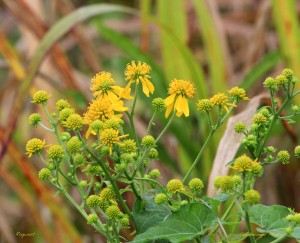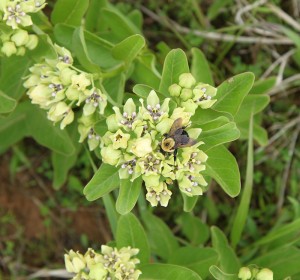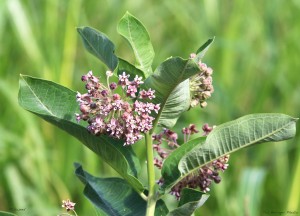One of the most important initiatives that has gathered strong support from important wildlife and environmental organizations in Kansas is the
need to recognize the tremendous ecological value of land along Kansas roadsides, specifically the narrow ribbon of land between the road and the nearest fence line. Thoughtless and excessive mowing costs taxpayers six million dollars anually and destroys vegetative habitat along thousands of miles of roads in Kansas that could be managed instead for wildlife, wildflowers (e.g. black-eyed Susans, coneflowers & butterfly milkweed), and native grasses (e.g. prairie dropseed, side-oats grama, little bluestem & big bluestem, Indian grass and switch grass). So much of Kansas is developed into important productive farmland and rangeland that the remaining ribbon of land along our roadways has become more important than ever because it represents collectively many square miles of land that could be filled with wildflowers and native grasses for pollinating insects and all types of wildlife. By not mowing less snow will drift onto the roads in winter and wildflowers can bloom and develop seed. A notable improvement is visible along K177 where extensive milkweed has been established to support pollinators like the monarch butterfly. Other flowers like violets could support the fritillary butterfly. Eliminating the broad use of herbicides along roadsides (except to eliminate invasive plants like Caucasian Bluestem, Canadian thistle & musk thistle) would also help establish and maintain important native vegetation. Native thistles, on the other hand, should be retained since their down is used in some bird nests. The KDOT should be recognized for the efforts it has made thus far in their seeding projects and revised mowing regimens. In recognition of these values, the Kansas Wildlife Federation, at its
annual meeting in 2014, drafted and passed the following resolution to address this subject.
KANSAS WILDLIFE FEDERATION
Resolution 2014-5
SUPPORT FOR INTEGRATED ROADSIDE VEGETATIVE MANAGEMENT ON COUNTY AND
TOWNSHIP ROADS IN KANSAS
Whereas, Kansas has over 10,000 miles of state administered roads; and
Whereas, there are approximately 80,500 miles of county administered
roads in Kansas; and
Whereas, Kansas has tens of thousands of miles of township and local
entity administered roads; and
Whereas, the Kansas Department of Transportation has started to
implement the use of Integrated Roadside Vegetative Management (IRVM)
practices to improve aesthetics, reduce maintenance costs and enhance
wildlife habitat on their roadsides; and
Whereas, Kansas counties, townships and local entities could benefit by
implementing IRVM practices on roadsides under their administration.
NOW, THEREFORE BE IT RESOLVED that the Kansas Wildlife Federation
assembled during its annual meeting, February 22, 2014 in Salina,
Kansas, urges counties, townships and local entities to adopt Integrated
Roadside Vegetative Management (IRVM) practices on roadsides under their
administration; and
BE IT FURTHER RESOLVED that KWF urges adjacent landowners to county and
township roadsides to endorse implemented IRVM practices.



